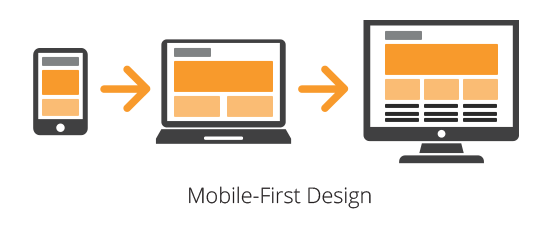9 Responsive Web Design Principles You Should Know in 2023 and Beyond

Share This Article
Why is Responsive Web Design Important?
Table of Contents
Subscribe to Our Blog
We're committed to your privacy. SayOne uses the information you provide to us to contact you about our relevant content, products, and services. check out our privacy policy.
A well-structured, user-friendly, and responsive web design ensures your website looks great and functions well on various devices and web browsers.
Why is Responsive Web Design Important?
- Reach and Engagement: Responsive design helps in reaching a wider audience, ensuring that users have a good viewing experience on all devices. It aids in keeping the audience engaged, regardless of the device they use.
- Adaptability: Websites should easily adapt to different screen sizes and resolutions, ensuring that they look appealing and are easy to navigate on various devices.
What Principles will be Covered?
We'll be discussing essential principles such as user-centricity, mobile-first design, simplicity, consistency, and various others that play a crucial role in crafting websites that captivate and engage users effectively. These guidelines aim to equip you with the knowledge to build websites that resonate with online visitors' current needs and expectations.
1. User-Centricity: Prioritizing the User Experience
When we talk about web design, we must always place the user at the heart of our decisions. After all, they are the ones interacting with the design, and their experience will shape their perception of the brand.
Understanding User Behaviors and Needs:
Dive into analytics and tools to get an insight into how users navigate your site. What pages do they visit the most? Which ones do they leave quickly? This data provides valuable clues about what works and what doesn't.
Checkout How AI Enhance the User Experience of Web Apps
The Role of User Feedback:
While data can tell you a lot, nothing beats direct feedback from users. Encourage comments, run surveys, or even have one-on-one sessions. By listening to their thoughts, you can find areas of improvement and make changes that truly cater to their needs.
2. Mobile-First Design: Crafting for Compact Screens

Starting small is the way to go when it comes to web design. Here's why:
Designing for Smaller Screens:
Tiny screens are a challenge but also an opportunity. Begin your design journey with mobile screens in mind. Why? Because simplifying for a small screen forces you to focus on what's truly important. Any fluff or extras are stripped away, leaving only the essentials. This approach ensures that users get the best experience without the distractions.
Flexibility Across Devices:
Mobile isn't the only player in town. People jump from tablets to laptops to massive desktop monitors. Your design needs to flow smoothly across all these mediums. That's the beauty of mobile-first: once you've nailed the compact design, expanding it to larger screens is a breeze.
And remember, while the screen sizes may differ, your audience's need for a clear, engaging website remains constant. So, think small to win big!
Read More on Designing an Engaging User Interface for Mobile Apps
3. Simplicity is Key
Web design is like art: sometimes less is more. This adage holds especially true for responsive design.
Decluttering the Layout:
It's tempting to show off every feature and detail, but it can be overwhelming. Strip away the extras. Keep what's truly necessary on your webpage. It not only looks cleaner but makes navigation a breeze.
Focusing on Essential Elements:
Prioritize the crucial aspects of your site. Ask yourself: what do you want your visitors to see or do? Highlight these elements. Push secondary info to the background or deeper into your site.
By keeping things simple, you guide your visitors, making their experience pleasant and engaging. After all, when it comes to web design, clarity always wins over complexity.
Checkout Common 5 mistakes eCommerce Stores make with UX Design
4. Consistency in Design Elements
Being consistent in web design isn't just about making things look pretty. It's about ensuring that users have a smooth experience throughout their journey on a site.
Uniform Look and Feel: Have you ever felt lost on a website because each page looked different? A consistent layout across pages helps users know where they are and where they need to go. This way, they don't spend time relearning the site's structure.
Cohesive Color Scheme and Typography: You need a consistent voice and tone in your written content, just as you'd want a consistent visual language. Stick to a set of colors and typefaces. For instance, don't throw in a random red page if you've chosen a blue palette. If your headers are in Arial, don't mix and match with Comic Sans.
PRO TIP: Web design is like telling a story. If each page feels like a different story, users may lose interest. Keep it consistent and watch users engage more deeply with your site.
Checkout how Outsourcing DevOps can help your design and development life cycle
5. Load Time and Performance Optimization

When users visit a website, they expect it to load quickly. A sluggish website isn't just an annoyance; it can push visitors away. Think about it – how long would you wait for a page to load? Probably not long!
Why Does Speed Matters?
- First Impressions Last: A slow website gives a bad first impression to your users, making them less likely to return.
- User Experience: Speed affects user satisfaction. A swift site can keep visitors engaged.
- Ranking Factor: Search engines, like Google, use website speed as a factor in search rankings.
Ways to Boost Website Speed:
- Optimize Images: Large, uncompressed images can drastically slow down a website. Use tools to compress them without losing quality.
- Limit Redirects: Every redirect leads to a waiting time. Minimize them!
- Use Browser Caching: This allows elements of your site to be stored on a user's device, speeding up repeat visits.
Every second counts in web design. Keep it swift and keep your users happy!
6. Intuitive Navigation: A Must for Responsive Web Design
Navigating a website should feel natural and straightforward for users. Think of it as guiding your guests through your home; you'd want them to find the bathroom or kitchen easily, right?
- Clear Hierarchies: Organize your site's content logically. The main content categories should stand out, and subcategories should be grouped under their main categories. This clarity helps users find what they're looking for without fuss.
- Sitemaps: A Blueprint of Your Site: Just as architects use blueprints, web designers use sitemaps. They lay out the site's structure, ensuring that nothing is overlooked. A well-thought-out sitemap aids in creating a user-friendly navigation menu.
- Prioritize Accessibility: It's crucial to ensure that every visitor, regardless of ability, can navigate your site. Use straightforward language, easy-to-click buttons, and tools that make your site usable for everyone, including those with disabilities.
Your website's navigation can guide users to the information they seek, or it can drive them away. Prioritize clarity and accessibility to keep them engaged and satisfied.
7. Effective Visual Hierarchy
One of the foundational principles behind captivating web design is visual hierarchy. It's the art of arranging content in a manner that effortlessly guides visitors through the information. Properly employed, it makes sure your website looks good and is a breeze to navigate.
Guiding User Attention with Design Elements:
It's more than just placing things where they seem fit. It's about purposefully positioning design elements so users are naturally drawn to the most important parts first. Think of it as a roadmap for eyes. Use contrasting colors, different-sized texts, and strategic placements to dictate where a viewer's attention should go.
Importance of Strategic Layouts:
Crafting strategic layouts means understanding what you want your users to see first, second, third, and so on. Lay out your content in a way that logically and visually flows, making sure users don't miss out on any important stuff. Web design isn't just about looking good; it's about serving up content in an order that makes sense.
PRO TIP:
Great web design is less about flashy graphics and more about creating a user-friendly experience. The easier you make it for visitors to find what they're looking for, the better your website will perform.
Checkout Domain Driven Design for Microservices: Complete Guide
8. Grid-Based Layouts in Responsive Web Design

Grid-based layouts are the secret sauce to a neat and structured website design. Imagine organizing your content like you're setting items on a chessboard, where every piece has its own space, and there's no overlapping chaos.
Why Choose Grids?
Order and Cleanliness: Grids help you place every design component where it belongs. It's all about straight lines and equal spacing. The result? A website that's both easy on the eyes and simple to navigate.
Boosting User Understanding: Readers can easily follow and absorb information when it's laid out systematically. It feels familiar, even if it's their first visit.
So, when designing, always think about the grid. It's the foundation that can guide a reader through your site effortlessly. After all, a well-organized space is always more inviting.
9. Adaptable and Fluid Design
In the vast expanse of web design, one key principle stands out: adaptability. In today's diverse device environment, it's crucial that websites adapt to fit any screen size. This is where fluid design comes into play.
- Fluid Grids: Grids form the backbone of web layout, ensuring content is organized and viewable. A fluid grid scales based on the user's device screen, making sure content doesn't feel cramped or stretched out.
- Media Queries: These are nifty tools in a designer's toolkit. They allow websites to adjust based on device specifics like width, height, or even color capability, ensuring the design looks just right.
- Scalable Images: Have you ever visited a website where images just won't fit on your mobile screen? It's frustrating! Scalable images automatically adjust to the viewer's screen size, ensuring clarity without compromise.
By focusing on adaptability, you can ensure that your website looks its best on every device, from smartphones to desktops. Stick to these principles, and you'll be on the right path to creating a site that truly works for everyone.
Conclusion
Wrapping up, the core of a great website lies in its design principles. These rules ensure a pleasant user experience and hold the key to a site's success. A simple, clear, and consistent design keeps users engaged and helps convey your message effectively. Prioritizing a mobile-first approach and focusing on speedy load times are just as crucial. Remember, it's all about the user.
With the rapid changes in design trends and user expectations, staying updated is no longer a choice but a necessity. Commit to continuous learning and stay in touch with the pulse of web design.
If you're looking to craft a site that checks all these boxes, we at SayOneTech are here to help. Our team prides itself on designing user-centric web applications that stand out, aligning with all the top-notch web design principles. Ready to take the leap? Let's build something amazing together.
Share This Article
Subscribe to Our Blog
We're committed to your privacy. SayOne uses the information you provide to us to contact you about our relevant content, products, and services. check out our privacy policy.

